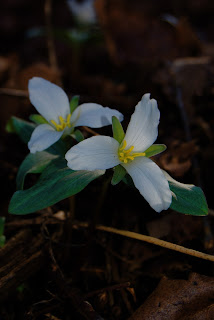Heading east from the rolling hills of southeastern Ohio, fiddling blues and folk rock filled the car and the minds of three like-minded people who are connected by a deep fascination for the outdoors - each equipped with their own perspective on nature to create a well-rounded, inspiring atmosphere. As hills grew into mountains, the entrance to God's country appeared quicker than our ears could pop. Color greeted us at the gates from a palette full of anthocyanin, carotene, and xanthophylis pigments. We arrived with our headlamps guiding our path, hinting towards an unfamiliar landscape through moonlit red spruce treetop silhouettes. By morning, a sense of shock seemed commonplace as we sat and built a warm fire beneath a grove of colorful, stunted blackgum trees - eggs, bacon, and summer sausage would fuel a long day of hiking.
I've wandered through no other place as vibrant during autumn as the sub-arctic tundra of Dolly Sods Wilderness Area in northern West Virginia. I hiked the same trails exactly one year from this past weekend; though, the views seemed completely fresh as this weird-weathered year continues to bring surprises. Rather than last year's colorful forest canopy, the low-growing understory and meadow plants seemed to be burning brighter this year probably due to such a dry spell, which helped trees shed their leaves much quicker.
We moved through the upland sods with the falling leaves. Mountain oat grass, hay-scented fern, and blueberries created an enchanting weekend for Kaitlyn and Alex who have never experienced Dolly at her best. Alex (a former guide at the Boundary Waters Canoe Area Wilderness of the northern woods) and Kaitlyn (a prolific rock climber and trip leader at Hocking College Outdoor Pursuits) both thanked me by sharing stories and teaching me about camp-cooking tricks and "leave no trace." It's so rewarding to have the chance to share a place as beautiful with good friends.
Golden carpets of hay-scented fern provided a beautiful aroma along the trails. These ferns not only out compete other plants through forming dense colonies, but also through their alleleopathic chemical composition, which inhibits growth of even the mightiest of tree species like oaks.
From the meadows to the forests, biodiversity means color during autumn. My home-state of Massachusetts was well represented with its state fower, "mayflower," mixed in with bristly dewberry, deer moss, sphagnum moss, and blueberry leaves. Beach-maple forests lit up the normally darkened woodlots.
Early on, we were graced with a heavily anticipated show from the sun.
A photo from the same spot exactly one year later. This year, blueberry leaves and quartz deposits added an extra element of beauty at Bear Rocks overlooking the alluring Allegheny plateau. The geology is made up of white sandstone.
Within minutes upon arrival to this view, we were quickly swept with a familiar sight of billowing fog rolling up from the valley. Instantly, we were able to fully understand the presence and power of sub-arctic tundra weather - Dolly Sods.





























